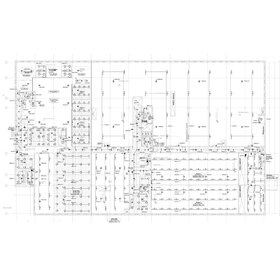
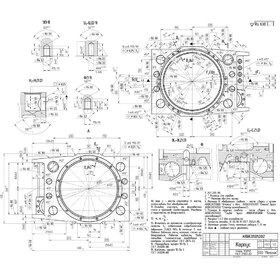
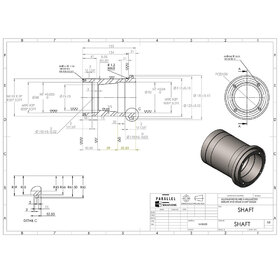
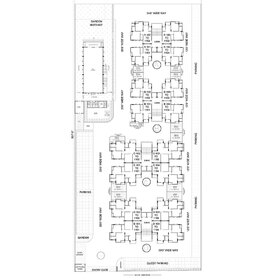
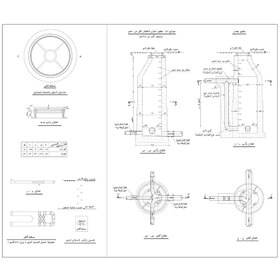
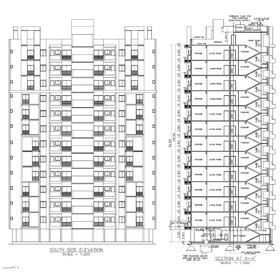
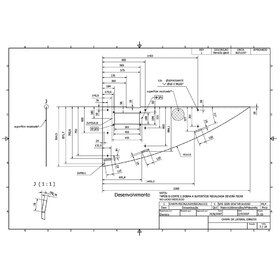







Before the age of computers, blueprints and similar figures needed to be completed by hand. Even as technology advanced, many technical drawings remained as simple printouts from rudimentary graphics applications. Today, CAD design services are capable of drawing, drafting, and generating images to even the most complex engineering and design specifications.
Even so, many traditional (legacy) images still exist in the filing cabinets and closets of designers and engineers, offering no more functionality than the paper they were originally printed on. Fortunately, there are ways to remedy this using legacy drawing conversion techniques.
The many instruments, advantages, and techniques for transitioning legacy graphics will be considered throughout. It will be made clear how engineering and design blueprints, as well as other assets, can be upgraded to become fully functional in a computer-based CAD environment for digital drafting, prototyping, and modeling, as well as many other technical drawing needs.
When drawn by hand or even with rudimentary technical applications, blueprints existed as fixed images, the geometry of lines and shapes, parameters and dimensions, scales (when applicable), annotations, and other general comments or attributions. The use of such drawings was quite limited after they were inked and completed.
If changes needed to be made to a technical drawing or blueprint of some kind, an entirely new drawing was necessary. This is both an incredibly time-consuming and inefficient process. To make them more accessible and workable, legacy drawings need to be updated and converted into an electronic database with a scalable, dynamic environment.
As such, the first step in breathing new life into these blueprints is the scanning process. In general, raster scanning is one of the primary methods and tools utilized for upgrading legacy/printed technical drawings into the new digital format. This is simply the beginning, however, as the scanning interface is only the start of a process to generate fully digital computer-aided design files.
Additionally, scanned files need to be recorded and stored, circulated and allocated, organized and updated in a manner consistent with each engineering or design company’s own technical standards and objectives. This can ultimately benefit a company in the form of substantial time, energy, efficiency, and financial resources in the long run.
The objective, of course, is to take traditional paper drawings and upgrade them into digital, controllable frameworks. In this way, the blueprints transition from legacy to contemporary formats and transform from simple, static images to complex, dynamic structures and systems. Each one of these configurations can then be composed and tweaked without the constricting limits of old.
The most valuable technical drawings are usually those that utilize the full range of computer-aided design implements. Such models make use of a graphics database that is capable of various complex functions. These include aspects such as three-dimensional extrusion, stress testing analytics, numerical control, modeling based on dynamic variables, cartographic sequencing, along with many other design functions and parameters. Because of this, a technical drawing can be generated in multiple modalities.
In a basic sense, as implied, a two-dimensional image can be generated from a legacy drawing that is viewable on a computer with no further functionality. This means that the computer does not have access to the actual parameters and internal architecture (no pun intended) of the blueprint. A computer display can reproduce an image based on the scanned document. The problem is that it cannot manipulate the graphics of any technical drawing in use with anything close to precision.
To solve for this, the next step is to generate an actual CAD file, something that can be controlled and arranged with computer-aided design software. In this respect, there are different ways a drawing can be represented in CAD. Most often, technical frameworks are drafted in two dimensions that have recognizable geometry and measurements/specifications. However, to bring legacy drawings into this environment requires more than a simple raster scan can provide.
Even as contemporary technical drawings usually get edited by computer-aided design programs, there still exists a backlog for many firms of blueprints and other documentation that might not have been updated into the CAD environment. For firms and companies wanting to maintain the old standard as well as take advantage of current technology, hybrid raster-vector offers a solution. Hybrid raster vectors enable both sets of data — the raster and the vector — to remain in a single drafting image file. Engineering or design firms that only need to make use of certain parts of their legacy drawings might benefit from this particular method of document transference.
When a fully updated and editable CAD file is called for, a simple raster scan or hybrid will not suffice. A further step is necessary to bring these more traditional/legacy blueprints into the electronic framework. Hand-drawn legacy drawings must be converted completely into the digital, vector-based format, if they are to be edited by modern computer-aided design software applications. Otherwise, they don’t offer much more help than the paper drawings on which they began.
As mentioned, the legacy drawing conversion process begins with a scan of the paper-based image. As opposed to basic scanners that provide a simple one-to-one mapping of a static image, modern technology allows for vector conversion of legacy drawings more quickly based on high-quality digital scanning. In technical terms, this refers to the dots per inch (DPI) of the scanner itself. The more dots that the scanner can process per inch of physical paper, the better the quality of the image will ultimately be. Secondly, the computer monitor itself is only limited by its own pixels per inch (PPI). This is the most common way to describe the resolution of a display.
In terms of the technical aspects, DPI and PPI are the foundation of the whole enterprise. A high-quality scanner transmits an image to a high-quality computer display. That being said, there are also two ways to do the process itself: in-house or outsource. In the former case, a firm maintains control over every aspect of the process and owns or rents the machinery needed for the project. In the case of the latter, a firm can focus on its current projects without being tied down in technical or organizational matters, leaving them free to continue business as usual.
For those firms opting to work on their legacy drawing conversion project themselves, plenty of scanners exist on the market today to get this done at a high level of quality (again, this is where the DPI comes in handy). This is itself another added benefit of working on the project in-house. If more documents pop up that need to be updated, a firm can simply throw them on the scanner bed and get access to all the digital files they need immediately, without the necessity of contacting (or recontacting) an external scanning company. Further, if a firm utilizes interns or executive assistants, these individuals might be able to work on such tasks without the more senior partners, designers, or engineers losing valuable time on their existing clients’ projects.
On the other hand, some firms might prefer to have an outside company do their legacy drawing conversion for them. This option has several advantages over performing such tasks in-house. First, there is no need to purchase special equipment. Second, no time is lost by anyone at the firm working on conversion while current clients’ projects gather dust (not to mention the potential ire of the clients themselves).
And lastly, when outsourcing, a firm can trust that their documents are being handled by experts who have experience in exactly this area. If a firm attempts to do convert legacy drawings themselves, they run the risk of not doing it well, properly, or efficiently. In these instances, they will likely need to hire out someone to do the job after all, using even more resources than before.
Ultimately, there is no right or wrong way to go about the process of legacy drawing conversion. Some firms will choose to try the project in-house, due to the extent of their abilities and resources. Other companies will choose to outsource the same sort of work, with the hope that tenured professionals will be able to handle the work more quickly and efficiently than they might themselves; again, this allows this to continue freely working on their own projects. The choice will depend greatly on a particular firm’s design needs, the scope and scale of their conversion project(s), as well as the overall finances and other resources available to them.
Bringing Cad Crowd on board to assist with your legacy drawing conversion project means that you can work with an exclusive group of the world’s greatest freelancers in nearly every design or engineering field in existence. We have the luxury of a community of technical draftsmen and women, designers, and legacy drawing conversion services from all over the globe.
Our extensive cadre of freelancers has years of experience working across a wide range of software within a diverse spectrum of businesses. Whatever your legacy drawing conversion needs may be, Cad Crowd can help you get exactly where you need to go. We can meet every legacy drawing conversion solution, regardless of project field or scope.
We have the ability to help you by utilizing a range of the most updated programs. Our network is made up of the best experts using the highest quality current computer-aided design software. Just let us know if there is a particular application that you need us to use, and we will locate the perfect legacy drawing conversion artist, designer, or engineer for your specific project.
The services available at Cad Crowd are at the disposal of clients who currently have drafts or models in-hand and need additional assistance with the task of rendering or further development utilizing a broad range of expert legacy drawing conversion engineers and designers.
Cad Crowd is simply the best place to get everything your legacy drawing conversion project needs researched, designed, drafted, engineered, rendered, or converted. Start working with us today.
When it comes to CAD design and 3D modeling, no one does it better than Cad Crowd. We have a network of pre-vetted, highly qualified freelance CAD drafting services. Regardless of the type of project you're looking to have completed, let us help. Contact us today for a free quote.


